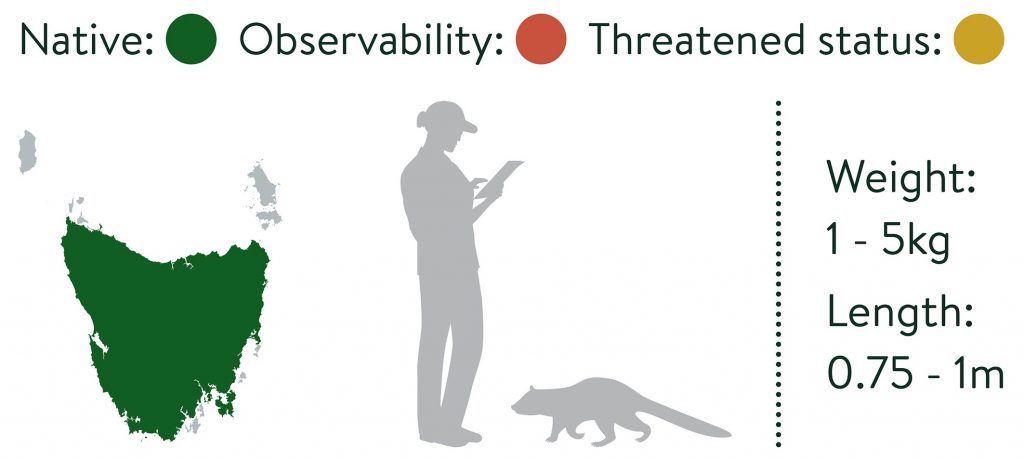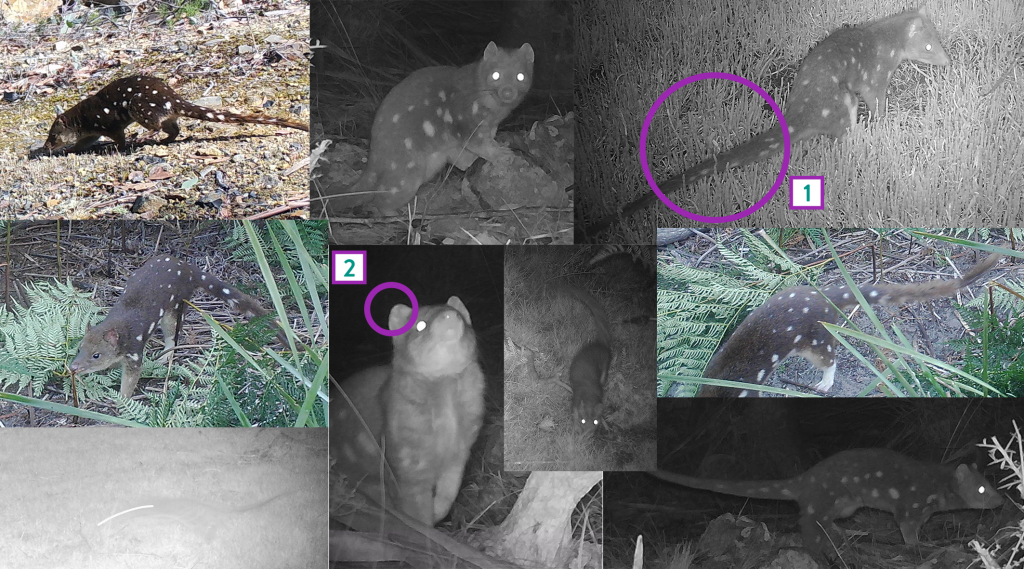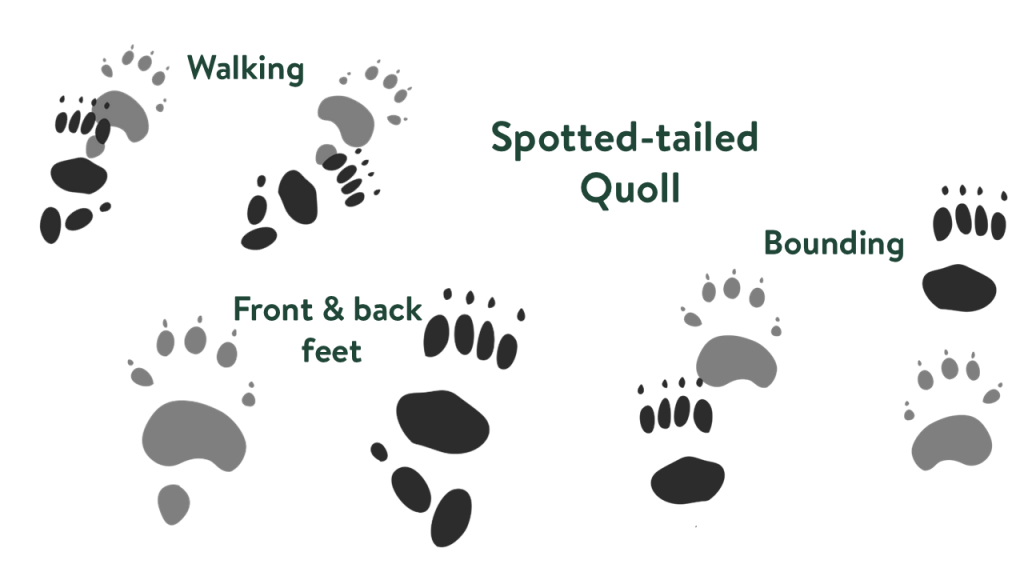Dasyuridae | Dasyurus maculatus
The Tasmanian population of spotted-tailed quolls, sometimes called the tiger quoll, is currently listed as Vulnerable under federal legislation. The species maintains low densities across the state except for the Bass Strait Islands where they have sadly become extinct. Historically, spotted quolls were present along the Great Dividing Range on the mainland, stretching from northern Queensland to Victoria and southeastern South Australia. Their range is now fragmented with Tasmania being a stronghold for the species.

Lifestyle
Spotted-tailed quolls are mostly nocturnal creatures. During the day they den in tree hollows, utilising their adept climbing skills, as well as in underground burrows, small caves, gorse thickets and among rocks and coarse woody debris. Breeding season for these quolls spans from June to July, with pouch young potentially observed from July to September. Young quolls achieve independence at around five months old, with an average lifespan ranging between three and four years. On average, females produce between two and four young. Female spotties are territorial but may be willing to share their home range with their daughters early in life. In contrast, males have large overlapping home ranges.
In the Midlands of Tasmania, somewhere between 400 and 1000 hectares of woodland habitat is required to support a breeding female quoll, with variations based on local rainfall. Despite their strong preference for woodland habitat, spotted-tailed quolls are capable of traversing long distances across open paddocks. One Midlands quoll travelled over 10 km across paddocks during the breeding season. However, individuals will hurriedly move across open environments (in one study, ~100 m/minute), seeking any available cover they can find along the way such as tall grass along fencelines, rocks, and wood piles.

Key identifying features
Body is muscular and long. Dark red-brown to golden-brown coat with a variable number of white spots over the body, legs and along the tail (1). Pale sandy-coloured underbelly. Sometimes with white socks. Tail is thin and longer than the body. Pointed muzzle with pink nose. Small, rounded ears (2). Move in a distinctly slinky or swaggering manner.
Similar species
Eastern quoll – smaller body size; larger pointed ears; absence of spots on the tail; coat colour can be black or tan.
Habitats
Spotted-tailed quolls can be found in forest, woodland and shrubland habitats in Tasmania. They’re also known to frequent the odd poorly constructed chook pen.
Diet
Quolls are generalist carnivores. They eat insects, rats, rabbits, birds and their eggs, lizards, possums and even small wallabies. A study of 177 quoll scats (poops) found medium-sized mammals (e.g., pademelon) were the most frequent prey item (41.9%), followed by large mammals (e.g., wallaby – presumably carrion; 31.1%), birds (24.3%), invertebrates (22.6%), small mammals (e.g., rodents; 21.1%) and reptiles (5.1%).
Threats
Similar to many Australian animals, habitat clearance, modification, and fragmentation pose the primary threat to spotted-tailed quolls. The removal of dead wood and other discrete habitat elements, such as rock piles, significantly restricts den resources available to quolls. Additionally, competition with cats for food, road collisions, and direct persecution or accidental poisoning contribute to the challenges quolls face.

